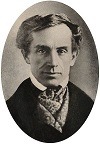When
it comes to traveling on the high seas, a compass is always very handy.
Columbus even used a compass to sail his four voyages. As the use of the
compass became more prominent, more people began to understand magnetic
declination. This is where the compass will no longer point to true north but
point in the direction of magnetic north. For example if you are looking at
your compass and it is pointing west, that would express that you location and
direction of movement is east of the northern pole, if that explains it any
easier but I digress. Navigation has the use of so many different technologies
on its side to only make travel much easier and directional movement much more
accurate.
The
gyro-compass was invented in 1906 but not widely used till 1908. A German made
invention, the gyro-compass was designed to be non-magnetic and would use a gyroscope
to more accurately aid navigational sailors. America developed and had a working
gyro-compass system in 1908 which formed the Sperry Gyroscope Company and beginning
its use in 1911 for WWII. In 1913 the first gyroscope had been installed on
commercial vessels by C. Plath. The Germany based manufacturer was already well
known for other navigational aids including the Sextant.
The gyro-compass
being non-magnetic would maintain accurate directions regardless of its
location, the weather, the movement of the ship and also the make of the
vessel. The name of the gyro-compass comes from the fact it is based off a
gyroscope. A gyroscope is a spinning disc that uses the earth’s rotation to
automatically match geographical direction. The gyro-compass uses the effect of
gyroscopic procession from the gyroscopic effect, but a gyrocompass and gyroscope
are two different objects. The gyroscope on its own is a spinning wheel mounted
on a gimbal for free movement.
To learn more about the gyro-compass and other navigational
tools:
Visit our website at mmncny.org.
Contact us! Tweet us at @mmncny and Visit/like our Facebook page!








